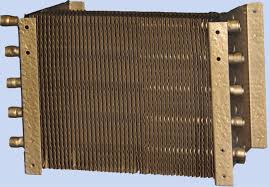
Dipped Evaporator Coils are the Answer to Dirty Sock Syndrome (DSS)
Air Star has worked with American Standard/Trane and they have tested dipped evaporator coils with 100% success rate. It is somewhat time-intensive and at times, an inconvenience for the homeowner. To dip the coil, it must be uninstalled, shipped to a third-party for coating, by dipping, shipped back to the contractor, then, finally, re-installed in the home. In our experience, this is the only solution that has proven to be effective 100% in removing and preventing Dirty Sock Syndrome. None of this is covered by warranty and is costly, but, not to worry, we offer affordable payment plans.
Dirty socks syndrome, also known as "Dirty Sock Syndrome" (DSS), is a common issue encountered with certain types of air conditioning systems, particularly heat pumps. It's characterized by a foul, musty odor reminiscent of dirty socks emanating from the air vents when the system is running. This unpleasant smell can permeate throughout the home, causing discomfort and embarrassment for homeowners. Fortunately, there are several steps you can take to address and resolve this issue.
Regular Maintenance: One of the primary causes of DSS is the buildup of mold and bacteria within the air conditioning system. Regular maintenance, including cleaning and changing filters, is essential for preventing this buildup. Filters should be checked and replaced according to the manufacturer's recommendations to ensure optimal airflow and filtration.
Cleaning the Evaporator Coil: The evaporator coil is a common location for mold and bacteria to thrive, especially in humid environments. Cleaning the evaporator coil with a mild detergent and water solution can help remove any buildup and eliminate odors. This task may require professional assistance, as accessing the coil can be challenging in some systems.
UV Light Installation: Installing a UV light within the air handling unit can help prevent mold and bacteria growth by sterilizing the air as it passes through the system. UV lights disrupt the DNA of microorganisms, preventing them from reproducing and causing odors. This solution is particularly effective for persistent odor problems associated with DSS.
Improving Airflow: Poor airflow within the air conditioning system can exacerbate DSS by allowing moisture to accumulate and promoting mold growth. Ensuring that vents are unobstructed and that ductwork is clean and properly sealed can help improve airflow and reduce the likelihood of odors.
Addressing Humidity: High humidity levels within the home can contribute to mold and bacteria growth, exacerbating DSS. Using a dehumidifier can help maintain optimal humidity levels, reducing the conditions that promote odor-causing microorganisms.
Professional Inspection: If DSS persists despite taking these measures, it may be necessary to enlist the help of a professional HVAC technician. They can conduct a thorough inspection of the system to identify any underlying issues contributing to the odor and recommend appropriate solutions.
Consider System Replacement: In some cases, older or poorly maintained air conditioning systems may be more prone to DSS due to inherent design flaws or accumulated wear and tear. In such instances, replacing the system with a newer, more efficient model may be the most effective long-term solution.
dipped coil install by air star is a solution with a 100% success rate
By addressing these factors and implementing appropriate solutions, homeowners can effectively eliminate dirty sock syndrome and enjoy clean, fresh air throughout their homes. Regular maintenance, proper ventilation, and professional assistance when needed are key to resolving this common HVAC issue.

